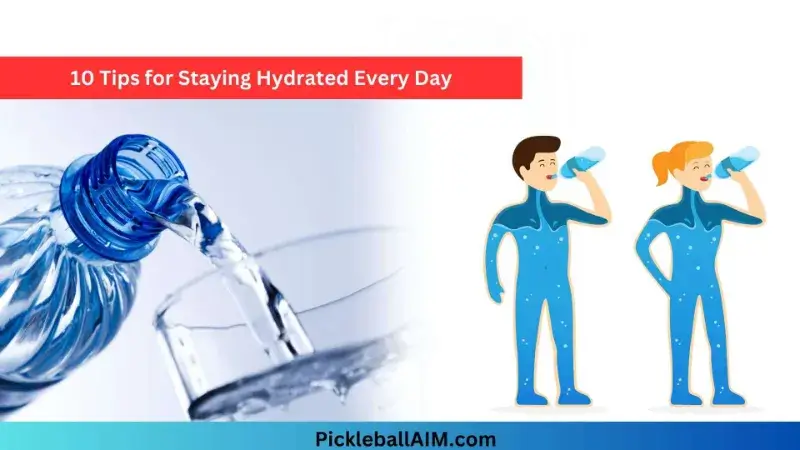10 Tips for Staying Hydrated Every Day
We’ve all heard it before: staying hydrated is crucial for our health and well-being. Our bodies are primarily composed of water, and proper hydration is essential for maintaining vital functions. However, with busy lives and hectic schedules, it’s easy to forget to drink enough water. Here are 10 practical tips to help you stay hydrated every day.
1. Set a Water Intake Goal
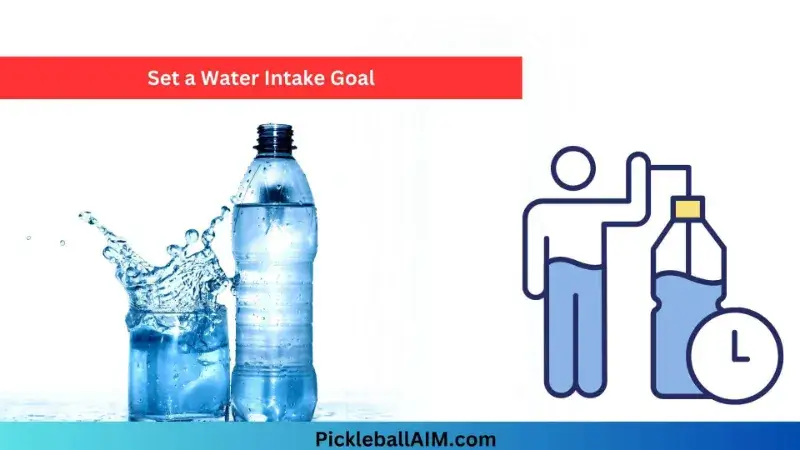
Determining your daily water intake goal is the first step toward staying adequately hydrated. While the “8×8” rule is a helpful starting point, personal requirements can differ based on various factors.
Calculate Your Water Needs:
To find a more accurate estimate, calculate your water needs based on your body weight. A general guideline is to consume about 30-35 milliliters of water per kilogram of body weight. For example, a person weighing 70 kilograms (154 pounds) should aim for around 2,100 to 2,450 milliliters of water daily.
Consider Individual Factors:
Keep in mind that factors such as age, activity level, and climate can influence your hydration needs. Hot and humid conditions, for instance, may require increased water intake to compensate for higher fluid losses through sweat.
Adapt to Your Lifestyle:
Your lifestyle plays a significant role in determining your hydration needs. If you have an active job or engage in regular physical activity, you’ll likely need more water to stay hydrated. Adjust your daily goal accordingly to accommodate these factors.
Setting a clear water intake goal tailored to your individual circumstances provides a specific target to work toward, making it easier to track your daily hydration.
2. Carry a Reusable Water Bottle
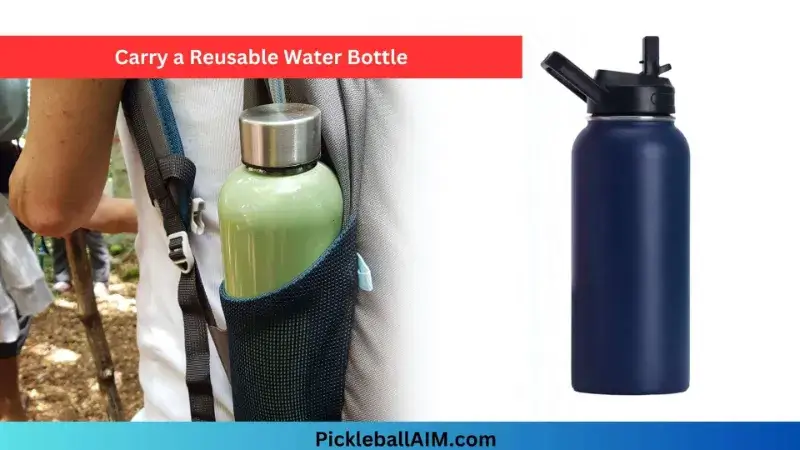
Investing in a reusable water bottle is a practical and eco-friendly way to ensure you have water on hand throughout the day.
Portability:
A reusable water bottle is convenient to carry with you wherever you go. Choose a size that suits your needs, whether it’s a compact bottle that fits in your bag or a larger one for all-day hydration.
Volume Markings:
Look for bottles with volume markings to help you monitor your water intake. These markings serve as a visual reminder of your progress throughout the day.
Environmentally Friendly:
Using a reusable bottle reduces plastic waste and promotes sustainability. It’s a small but impactful step toward a greener lifestyle.
Having a water bottle at your side makes it easy to take sips whenever you feel thirsty, helping you stay on track with your hydration goals.
3. Set Reminders
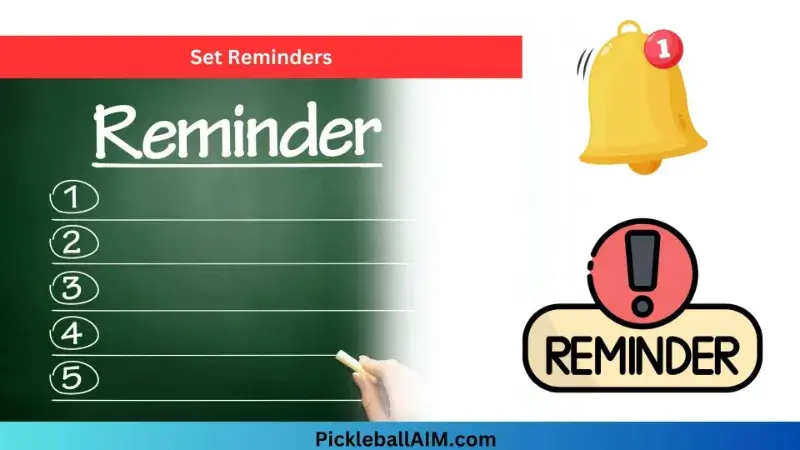
In our fast-paced lives, it’s easy to get caught up in daily tasks and forget to drink water regularly. Setting reminders can be a helpful way to stay on top of your hydration goals.
Smartphone Apps:
There are numerous smartphone apps designed to track your water intake and send hydration reminders. Some of these apps even calculate your daily water needs based on your profile, activity level, and climate. They send alerts and notifications to prompt you to drink water at regular intervals.
Alarms and Timers:
If you prefer a low-tech approach, set alarms or timers on your phone or other devices to remind you to take a sip. You can customize the frequency of these reminders to align with your daily schedule.
Using technology to remind you to drink water can be an effective way to establish a consistent hydration routine, ensuring you meet your daily intake goals.
4. Flavor Your Water
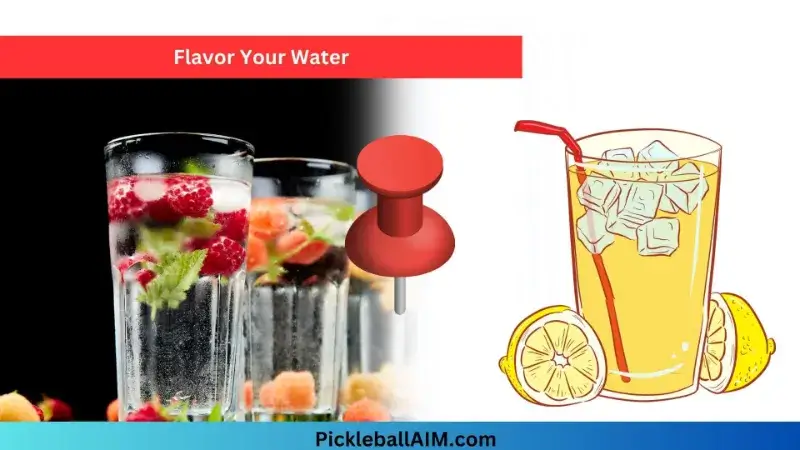
If plain water doesn’t excite your taste buds, adding natural flavors can make hydration more enjoyable.
Lemon, Cucumber, and Mint:
Slices of lemon, cucumber, or a sprig of fresh mint can infuse your water with subtle and refreshing flavors. These natural additions not only enhance the taste but also provide a burst of vitamins and antioxidants.
Berries and Citrus:
Experiment with berries like strawberries, raspberries, or blueberries, along with citrus fruits such as oranges or limes, to create a naturally flavored water concoction. Crush the berries or squeeze the citrus for a more robust flavor.
Herbal Teas:
Herbal teas like chamomile, hibiscus, or ginger can be brewed and chilled for a flavorful, caffeine-free alternative to plain water. Herbal teas offer a variety of tastes to suit your preferences.
By infusing your water with these natural flavors, you can make hydration an enticing and enjoyable experience, encouraging you to drink more water throughout the day.
5. Create a Schedule
Establishing a drinking schedule that aligns with your daily routine is an effective way to ensure consistent hydration.
| Time of Day | Amount to Drink | Notes |
|---|---|---|
| Morning (7:00 AM) | [8 oz/cup] | Drink a glass of water upon waking up. |
| Pre-Breakfast | [8 oz/cup] | Hydrate before your morning meal. |
| Mid-Morning | [8 oz/cup] | Take a water break to stay refreshed. |
| Before Lunch | [8 oz/cup] | Drink water to aid digestion before eating. |
| Afternoon | [8 oz/cup] | Keep sipping throughout the day. |
| Before Dinner | [8 oz/cup] | Hydrate before your evening meal. |
| Evening (8:00 PM) | [8 oz/cup] | Enjoy a glass of water in the evening. |
| Before Bed | [8 oz/cup] | A final sip to stay hydrated overnight. |
Morning Ritual:
Start your day by having a glass of water as part of your morning ritual. It’s a refreshing way to kickstart your metabolism and rehydrate after a night’s sleep.
Pre-Meal Hydration:
Make it a habit to drink a glass of water before each meal. Not only does this support digestion, but it also helps you reach your daily water intake goal.
Bedtime Routine:
Conclude your day by drinking another glass of water before bedtime. This ensures that you stay hydrated overnight and wake up feeling refreshed.
Creating a structured schedule makes drinking water a natural and integrated part of your day. It minimizes the risk of forgetting and helps you consistently meet your hydration needs.
6. Track Your Intake
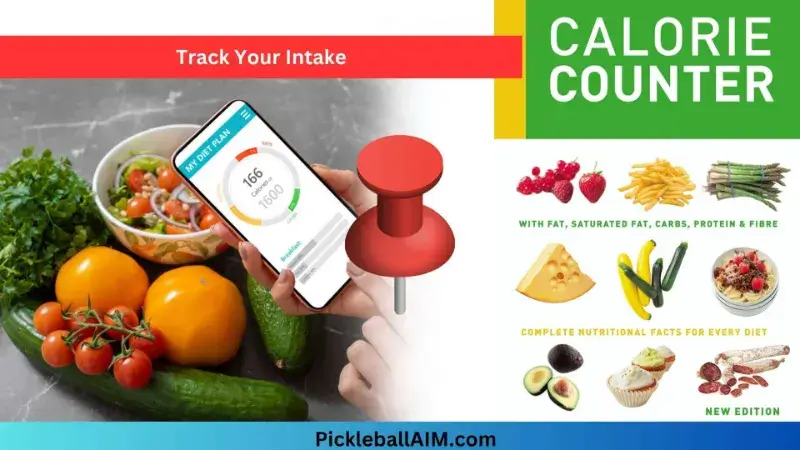
Keeping a record of your daily water consumption can provide valuable insights into your hydration habits and help you make necessary adjustments.
Notebook or Journal:
A simple and traditional way to track your intake is by keeping a dedicated notebook or journal. Create a daily log where you record the amount of water you drink at different times of the day.
Smartphone Apps:
Many smartphone apps not only remind you to drink water but also allow you to track your intake. They provide a visual representation of your progress and can even generate reports on your hydration patterns.
Visualize Your Progress:
Tracking your intake allows you to visualize how close you are to reaching your daily goal. It can also help identify trends, such as whether you tend to hydrate more in the morning or afternoon.
Make Adjustments:
By monitoring your water consumption, you can make informed adjustments to your daily routine. If you consistently fall short of your goal, you can increase your efforts to drink more water during the day.
7. Opt for Hydrating Foods
Staying hydrated doesn’t rely solely on drinking water; it can also be influenced by the foods you consume. Many fruits and vegetables are not only nutritious but also have a high water content, making them excellent choices to support your hydration goals.
Watermelon:
Watermelon is aptly named because it’s about 90% water. Enjoying a slice of watermelon on a hot day not only quenches your thirst but also provides vitamins A and C.
Cucumber:
Cucumbers have a water content of around 96%. They are a refreshing and hydrating addition to salads and sandwiches.
Celery:
With a water content of approximately 95%, celery is a crunchy and low-calorie snack that can contribute to your daily hydration.
Oranges:
Oranges are not only juicy but also rich in vitamin C. They have a water content of about 87%, making them a hydrating citrus option.
Incorporating hydrating foods into your diet not only diversifies your sources of hydration but also provides essential vitamins and minerals that contribute to overall health. These foods can be particularly beneficial during warmer months or after physical activity when your body’s fluid needs are increased.
8. Use a Straw
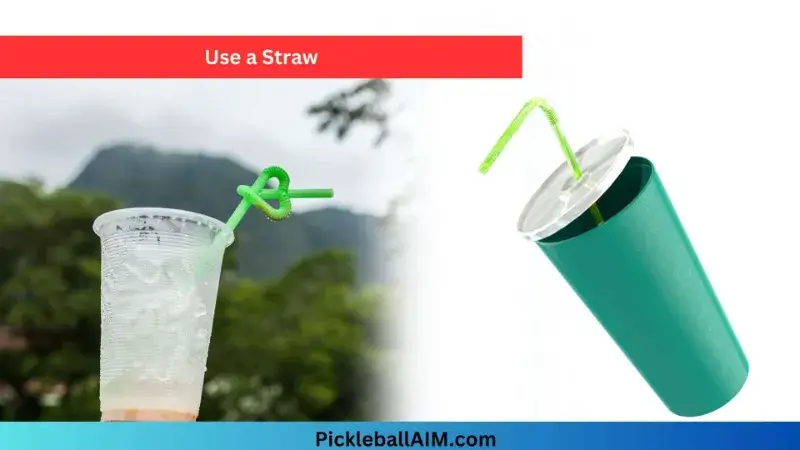
Believe it or not, sipping water through a straw can make a significant difference in your hydration routine.
Convenience:
Drinking through a straw is often more convenient and less effortful than sipping from a glass or bottle, especially when you’re engaged in other activities.
Sip Continuously:
Straws encourage you to take small sips continuously, which can help you reach your hydration goals more easily. It’s a subtle way to maintain a steady intake throughout the day.
Reduce Mess:
Straws can help reduce the risk of spills, making them a practical choice for those on the go or for individuals who tend to be a bit clumsy with open containers.
You can use reusable or eco-friendly straws to minimize waste and enjoy the benefits of straw-sipping without harming the environment.
9. Set Hydration Goals for Activities
Before engaging in physical activities or workouts, it’s essential to plan your hydration to ensure optimal performance and minimize the risk of dehydration.
Pre-Activity Hydration:
Aim to drink water before you start your activity. Depending on the duration and intensity, this may involve consuming a specific amount of water about an hour before you begin.
During-Activity Hydration:
If your activity is prolonged or strenuous, establish hydration intervals. For example, set a goal to drink a few sips of water every 15-20 minutes during exercise. Consider sports drinks with electrolytes for intense workouts to replace lost minerals.
Post-Activity Hydration:
After your activity, continue to hydrate to replace fluid losses. This is a crucial step in the recovery process. Water or a post-workout recovery drink can be beneficial.
By setting hydration goals1[About 15.5 cups (3.7 liters) of fluids a day for men. About 11.5 cups (2.7 liters) of fluids a day for women] for specific activities, you’ll be better equipped to meet your body’s fluid needs during exercise, which is essential for maintaining performance and preventing overheating.
10. Listen to Your Body
Perhaps the most fundamental tip for staying hydrated is to listen to your body’s cues.
Thirst:
Thirst is a natural signal that your body needs water. Don’t ignore it. By the time you feel thirsty, you may already be mildly dehydrated. When you experience thirst, take it as a prompt to hydrate.
Urine Color:
The color of your urine can be an indicator of your hydration status. Light, pale yellow urine typically suggests proper hydration, while dark yellow or amber-colored urine may indicate dehydration. Aim for a pale yellow color to ensure you’re adequately hydrated.
Physical Signs:
Pay attention to physical signs of dehydration, such as dry mouth, dry skin, fatigue, and headache. These symptoms can signal the need for increased water intake.
By tuning in to your body’s signals, you can proactively address your hydration needs, ensuring that you maintain a proper fluid balance throughout the day.
Conclusion for Staying Hydrated
Staying hydrated is a simple yet crucial aspect of maintaining overall health and well-being. Incorporating these ten tips into your daily routine can help you establish consistent hydration habits, ensuring that you meet your daily water intake goals. Remember that proper hydration is not just about quenching your thirst; it’s a proactive practice that contributes to your overall vitality and performance.

